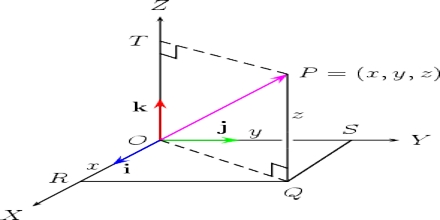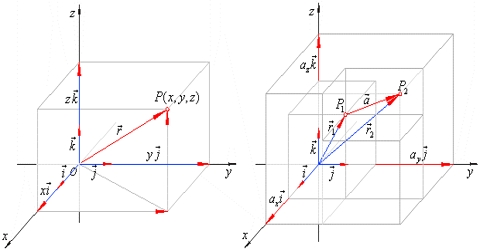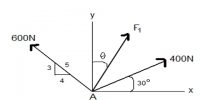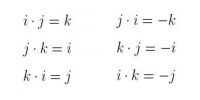Resolution of Vector in Three Dimensional Co-ordinates
While expressing a vector quantity with its components we will consider resolution only in three-dimensional rectangular coordinates.
In three dimensional coordinate system, a position vector can be expressed in the following way.
ř = î x + ĵ y + ƙ z. Here position coordinate of P is (x, y, z).

Proof: Let OX, OY and OZ be three lines perpendicular to one another and corresponds to X, Y and Z axes respectively [Figure].
Let a position vector ř be represented by line OP, in this axes-system, both in magnitude and direction.
Let consider that the co-ordinate of P is (x, y, z) and î, ĵ and ƙ are the unit vectors along the axes X, Y and Z respectively. Here PR is drawn normal to plane XY and RQ is normal to OX [Figure].
Now, from figure,
OP = OR + RP and
OR = OQ + QR
so, OP = OQ + QR + RP
but, OQ = x î . QR = y ĵ . RP = z ƙ
and, OP = ř
So, ř = x î + y ĵ + z ƙ
Here, x, y and z are the components of vector ř along X, Y and Z axis respectively.
Modulus of ř:
From figure we get,
OP2 = OR2 + RP2 and, OR2 = OQ2 + QR2
so, OP2 = OQ2 + QR2 + RP2
or, r2 = x2 + y2 + z2
then, r = √( x2 + y2 + z2)















